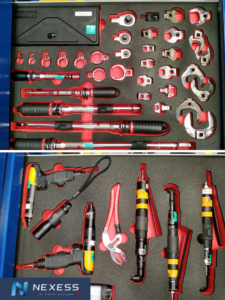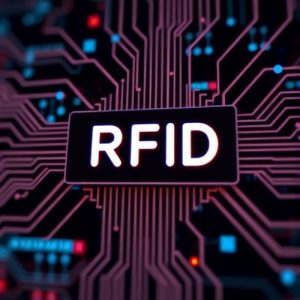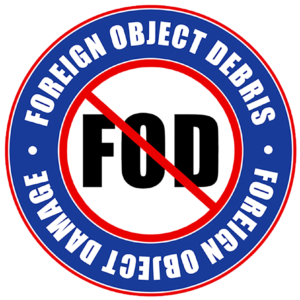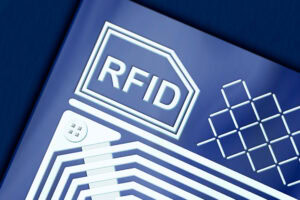In today’s fast-paced industrial landscape, the need for efficient and precise tool calibration management has never been more critical. Radio Frequency Identification (RFID) technology has emerged as a game-changer, offering innovative solutions that streamline operations and enhance visibility. This post explores the transformative role of RFID in tool calibration management and its potential to drive efficiency and accuracy across industries.
The Role of RFID in Tool Calibration Management
RFID technology leverages radio waves to identify and track objects, making it an ideal solution for managing calibration processes.
By attaching RFID tags to tools, organizations can automate data collection, ensuring precise calibration records and reducing human errors. This technology bridges the gap between manual tracking methods and fully automated systems, enabling seamless and accurate management.
Traditional calibration management often relies on manual processes that are prone to human error, inefficiencies, and inconsistencies. RFID technology revolutionizes this by providing a scalable and automated approach. With RFID, calibration data can be automatically updated in real-time, offering unparalleled accuracy and reliability. This reduces the risks associated with delayed or missed calibrations, which can result in costly downtime or non-compliance with industry standards.
Moreover, RFID solutions allows for integration with existing enterprise resource planning (ERP) and maintenance management systems, creating a unified ecosystem for data management. This ensures that all stakeholders have access to accurate and up-to-date information, fostering better decision-making and operational efficiency.

Benefits of RFID Management Solutions
Enhanced tool visibility
One of the standout benefits of RFID technology is its ability to provide real-time visibility into tool locations and statuses. Each tool equipped with an RFID tag can be tracked as it moves through various stages of operation. This reduces the risk of misplaced tools or lost tools, which can lead to production delays and increased costs.
For industries where tools are frequently shared among teams or transported across facilities, RFID ensures that tools are accounted for at all times. This visibility not only improves operational efficiency but also enhances accountability among team members.
Streamlined operations
RFID eliminates the need for manual data entry, significantly reducing administrative burdens and operational inefficiencies. Tasks such as inventory updates, tool check-ins, and calibration scheduling can be automated, saving valuable time and resources.
By integrating RFID with cloud-based systems, organizations can centralize their tool management processes. This enables teams to access critical information remotely, facilitating better coordination and collaboration. Additionally, automated alerts and notifications can be set up to remind teams of upcoming calibrations or maintenance tasks, ensuring that no deadlines are missed.
Key RFID Applications in Tool Management
Real-Time Location Tracking
RFID systems enable precise tracking of tools within facilities. This capability is particularly beneficial in large-scale operations such as manufacturing plants, construction sites, and warehouses where locating specific tools can be time-consuming.
Real-time location tracking not only improves efficiency but also enhances security by preventing unauthorized use or removal of tools. Advanced RFID systems can even integrate with geo-fencing technologies, providing alerts when tools are moved outside designated areas.
In the aerospace industry, RFID plays a crucial role in tracking high-value tools across expansive maintenance, repair, and overhaul (MRO) facilities. For instance, RFID ensures that torque wrenches and calibration instruments are always available at the required workstations, preventing delays in aircraft servicing.
Inventory Management
Accurate inventory management is crucial for maintaining operational efficiency. RFID solutions provide automated and up-to-date inventory records, reducing stock discrepancies and ensuring optimal tool availability. This is especially important in industries where tool shortages can lead to costly production delays.
In defense applications, RFID enhances the management of sensitive tools and equipment. For example, military bases use RFID to track specialized tools used in vehicle maintenance, ensuring the readiness of critical assets at all times. This minimizes downtime and supports mission-critical operations.
Organizations can also use RFID to monitor tool usage rates, helping them identify patterns and make informed decisions about procurement and resource allocation. By maintaining an accurate inventory, companies can avoid overstocking or understocking, optimizing their investment in tools and equipment.
Compliance Improvements
Compliance with industry standards and regulations is a top priority for many organizations. RFID systems help maintain detailed and accurate calibration records, ensuring that all tools meet required specifications. This not only minimizes the risk of non-compliance but also simplifies the auditing process.
For industries such as aerospace, healthcare, and manufacturing, where strict regulatory standards are enforced, RFID provides a reliable way to demonstrate adherence to quality and safety protocols.
In the MRO sector, RFID ensures that tools adhere to strict aviation maintenance standards by automatically logging calibration dates and results. This simplifies compliance reporting and ensures that airlines meet international safety requirements.
RFID Cabinets and Tool Carts to manage tools subject to controls
The integration of RFID technology with specialized RFID cabinets and tool carts has revolutionized tool management. These secure storage solutions are equipped with RFID readers that automatically scan and track tools as they are added or removed. This ensures real-time accountability and prevents unauthorized access.
In aerospace maintenance facilities, RFID cabinets are used to store calibrated tools like torque wrenches and digital micrometers. Technicians can quickly retrieve the tools they need, and the system automatically logs the transaction, reducing administrative work and ensuring compliance with maintenance schedules.
Similarly, MRO sectors employ mobile RFID tool carts to enhance flexibility in large facilities. These carts allow technicians to carry calibrated tools to different workstations while maintaining full visibility and accountability. The RFID system ensures that tools are returned to the cart after use and alerts technicians if any tool is missing.
In defense applications, RFID cabinets are used to secure sensitive tools required for vehicle and aircraft maintenance. These systems provide an additional layer of security by integrating with access control systems, ensuring that only authorized personnel can access the tools.
Tool Usage Optimization
RFID data can reveal usage patterns, allowing organizations to optimize tool allocation and prevent overuse or underuse. By analyzing this data, companies can identify tools that are underutilized and reallocate them to areas where they are needed most. This ensures that resources are used efficiently and reduces unnecessary expenditure on new tools.
Maintenance Scheduling
RFID systems streamline maintenance scheduling by providing alerts based on tool usage and calibration history. This ensures that maintenance tasks are performed proactively, reducing the risk of unexpected breakdowns. By scheduling maintenance at optimal intervals, organizations can extend the lifespan of their tools and minimize downtime.
Alerting when misused
RFID solutions, such as RFID cabinets, tool carts or RFID Portals, can trigger alerts when a tool with an overdue calibration date is borrowed. This is one of the key benefit of using RFID technology to track tools subject to calibration: triggering an alert (visual, sound or notification) is the best way to avoid a technician to use a tool that will not torque at the right value.
Challenges in Implementing RFID Technology
While RFID offers numerous benefits, its implementation is not without challenges. Addressing these challenges is crucial to ensuring the successful adoption of RFID solutions.
Environmental Factors
RFID performance can be affected by environmental conditions such as extreme temperatures, moisture, and interference from metals. For example, in manufacturing environments where tools are exposed to harsh conditions, selecting the right type of RFID tags and readers is essential. Specialized tags designed to withstand challenging environments can mitigate these issues, ensuring reliable performance. Nexess has selected a range of rugged RFID tags dedicated to tools identification and tracking.
User Adoption and Training
Introducing RFID systems requires comprehensive training to ensure users understand and embrace the technology. Resistance to change is a common barrier, particularly among employees who are accustomed to traditional methods. To address this, organizations should invest in user-friendly interfaces and provide hands-on training sessions. Demonstrating the tangible benefits of RFID, such as reduced workloads and improved efficiency, can also help foster acceptance.
Case Studies: Successful RFID Implementations
Aerospace Industry
In the aerospace industry, RFID has been instrumental in reducing tool-related delays during aircraft maintenance. A major airline implemented RFID to track calibration tools, achieving a 20% reduction in time spent searching for critical instruments and ensuring a precise tracking of tool usage. This system also ensured compliance with aviation safety standards by automating calibration record updates.
MRO Sector
An MRO facility servicing defense aircraft utilized RFID to monitor tool movement and usage. This enabled technicians to quickly locate required tools, cutting maintenance turnaround times by 25%. The facility also integrated RFID data with its ERP system to automate inventory replenishment, ensuring uninterrupted operations.
Defense Applications
In the defense sector, RFID has enhanced the management of tools used in vehicle and aircraft maintenance. By tagging each tool with an RFID chip, military personnel can track usage and ensure timely calibrations. This has led to improved operational readiness and reduced equipment downtime.
Measuring the Impact of RFID Solutions
Operational Efficiency
Organizations leveraging RFID report increased productivity and reduced operational bottlenecks. Automated tracking and calibration management allow teams to focus on core tasks rather than administrative duties. Additionally, the ability to access real-time data enables faster decision-making, further enhancing efficiency.
Cost Reduction
By minimizing tool loss, downtime, and manual labor, RFID solutions contribute to substantial cost savings over time. The initial investment in RFID technology is often offset by the long-term benefits, including reduced operational costs and improved resource utilization.
Coupling RFID with IOT solutions for TOOL CALIBRATION Tracking
Sucessfull use case with Nexess and One-Too Partnership
NEXESS has joined forces with One-Too an expert in measurement and tightening equipment control, to integrate the VISA torque tester with the NexCap® platform. The VISA device ensures proper calibration and adjustment of tightening tools such as torque wrenches. It is equipped with a remote UHF RFID reader that scans tools retrieved from NEXESS XL RFID cabinets and tool carts. Once the tool is identified, the control sequence is automatically initiated, guaranteeing that the operator inspects the correct tool with the appropriate sequence.
Conclusion
RFID-based solutions are revolutionizing tool calibration management by delivering unparalleled accuracy, visibility, and efficiency. As industries continue to embrace this technology, the possibilities for innovation and improvement are boundless. By addressing implementation challenges and leveraging RFID’s full potential, organizations can achieve a transformative impact on their operations and set new benchmarks for excellence in tool management.
From enhanced visibility and streamlined operations to improved compliance and cost savings, RFID offers a comprehensive solution to the challenges of modern tool management. As the technology evolves and integrates with emerging trends such as IoT and automation, its impact is set to grow even further, solidifying its position as a cornerstone of efficient and effective tool calibration management.
FAQ
Calibration management refers to the systematic process of overseeing, scheduling, and tracking the calibration of measurement instruments and equipment to ensure that they remain accurate, reliable, and compliant with standards. This process typically involves:
Planning and Scheduling: Ensuring that equipment is calibrated at regular intervals based on manufacturer recommendations or regulatory requirements.
- Execution: Performing the calibration using reference standards that are traceable to national or international standards.
- Documentation: Keeping accurate records of calibration results, including the dates, methods used, the results of tests, and any corrective actions taken if an instrument is out of tolerance.
- Tracking: Monitoring the status of each piece of equipment to make sure it’s calibrated on time, and managing the lifecycle of calibration certificates.
- Compliance: Adhering to industry regulations and standards (such as ISO, GMP, or FDA) that mandate calibration practices in sectors like manufacturing, healthcare, and research.
- Analysis and Adjustment: Assessing trends or anomalies in calibration data to predict future calibration needs or identify issues with measurement tools.
The goal of calibration management is to ensure that all instruments provide consistent, accurate measurements that meet required standards for quality, safety, and performance.
Tooling calibration refers to the process of adjusting and verifying the accuracy of tools used in manufacturing or measurement to ensure they meet specified standards. These tools are typically used to shape, cut, measure, or assemble parts, and calibration ensures that they function with precision.
Key aspects of tooling calibration include:
- Accuracy Verification: Ensuring that the tools, such as gauges, micrometers, calipers, and other measurement devices, give readings that align with known standards (e.g., national or international reference standards).
- Adjustments: If any discrepancies are found during calibration, the tool may need to be adjusted to bring it within tolerance limits.
- Consistency: Calibration ensures that tools produce consistent and repeatable results over time, minimizing errors in manufacturing processes.
- Performance Monitoring: Regular calibration checks help identify any wear or damage to tools that could affect their performance, and also indicate when tools might need maintenance or replacement.
- Documentation and Tracking: Calibration results are often documented to maintain a record of the tool’s performance, compliance with quality standards, and service history. This helps ensure traceability and accountability.
In industries like aerospace, automotive, and precision manufacturing, tooling calibration is critical because even slight deviations in measurements can lead to defective parts, production delays, or safety risks. Calibration is typically carried out by skilled professionals using specialized equipment and procedures.


 Français
Français







